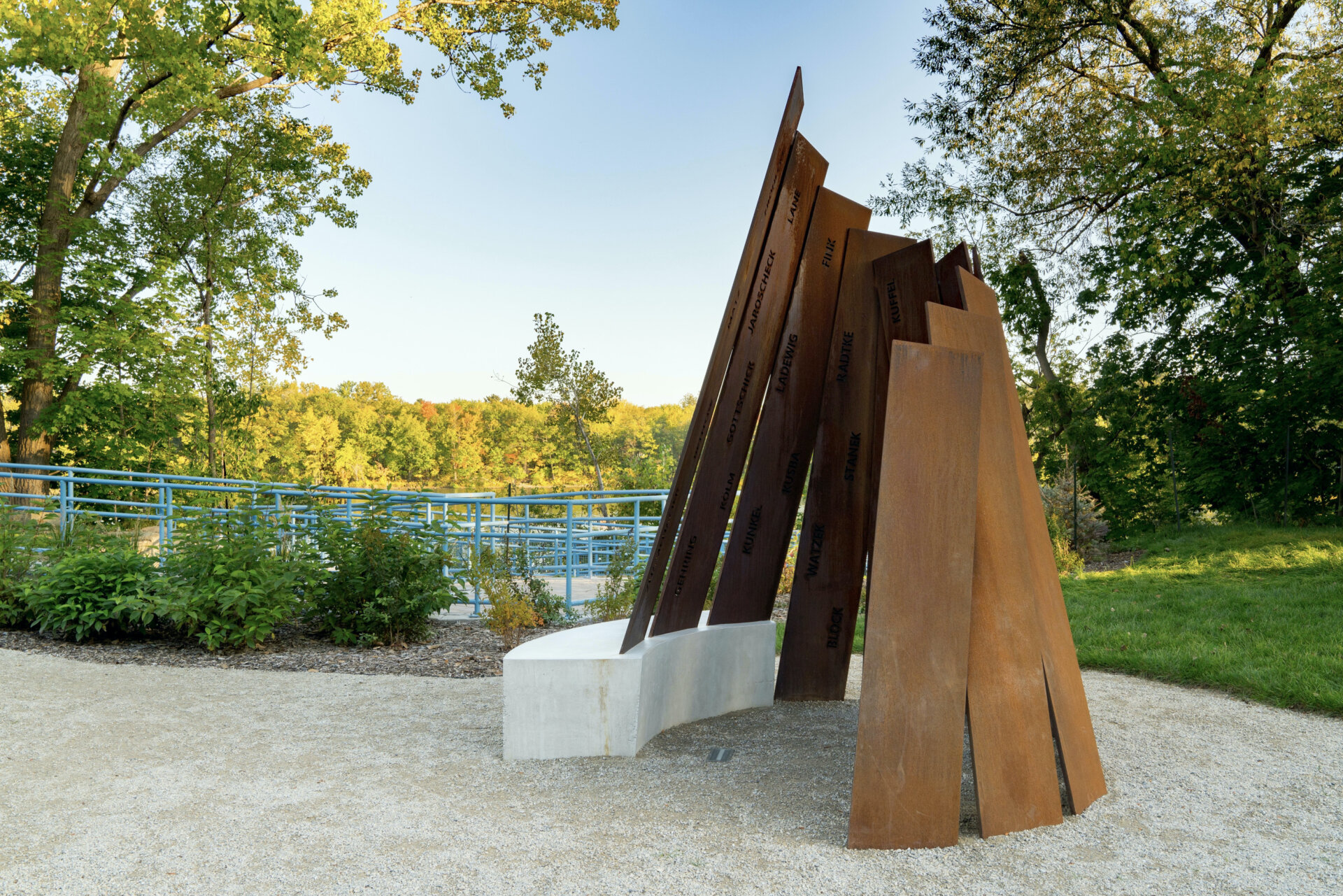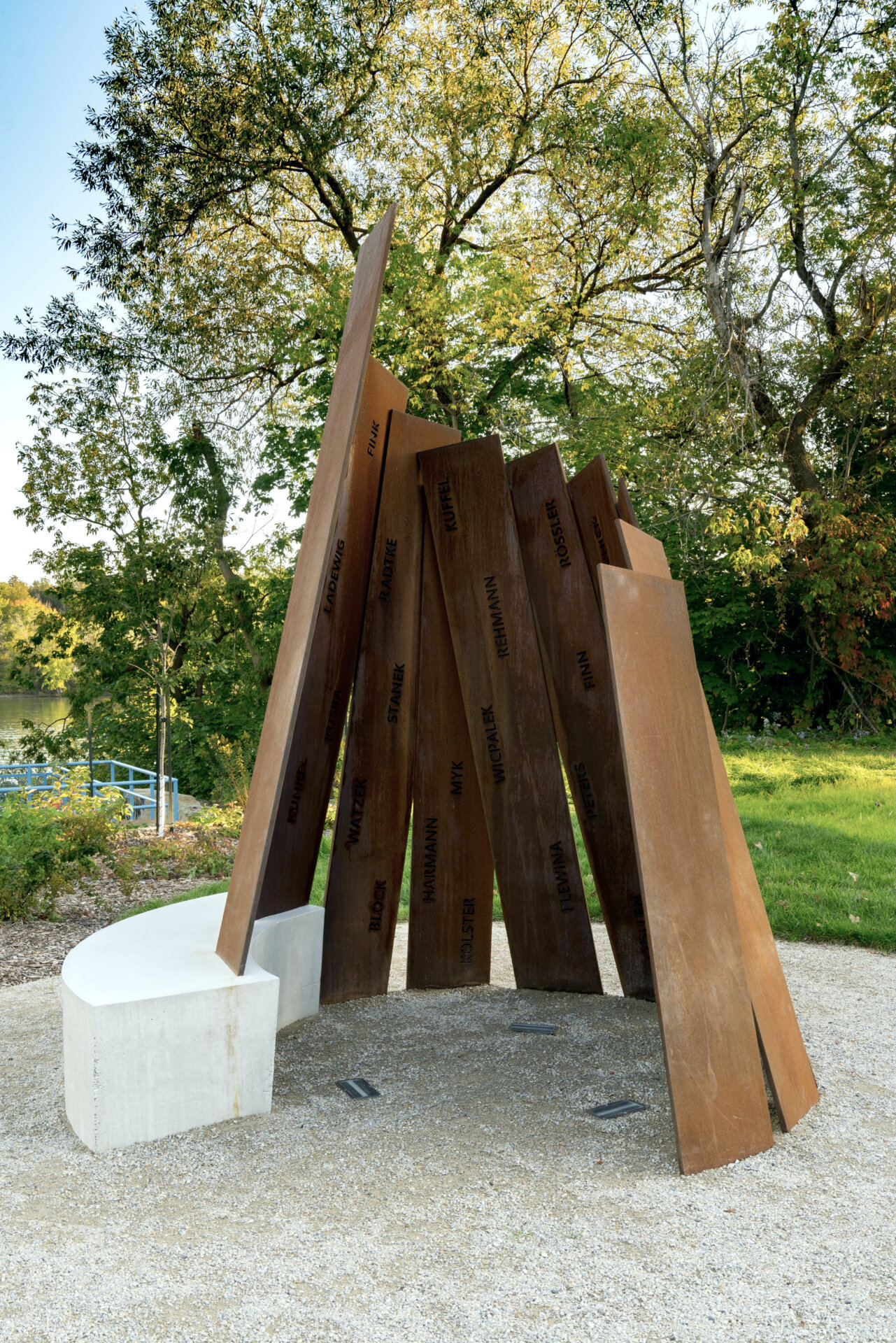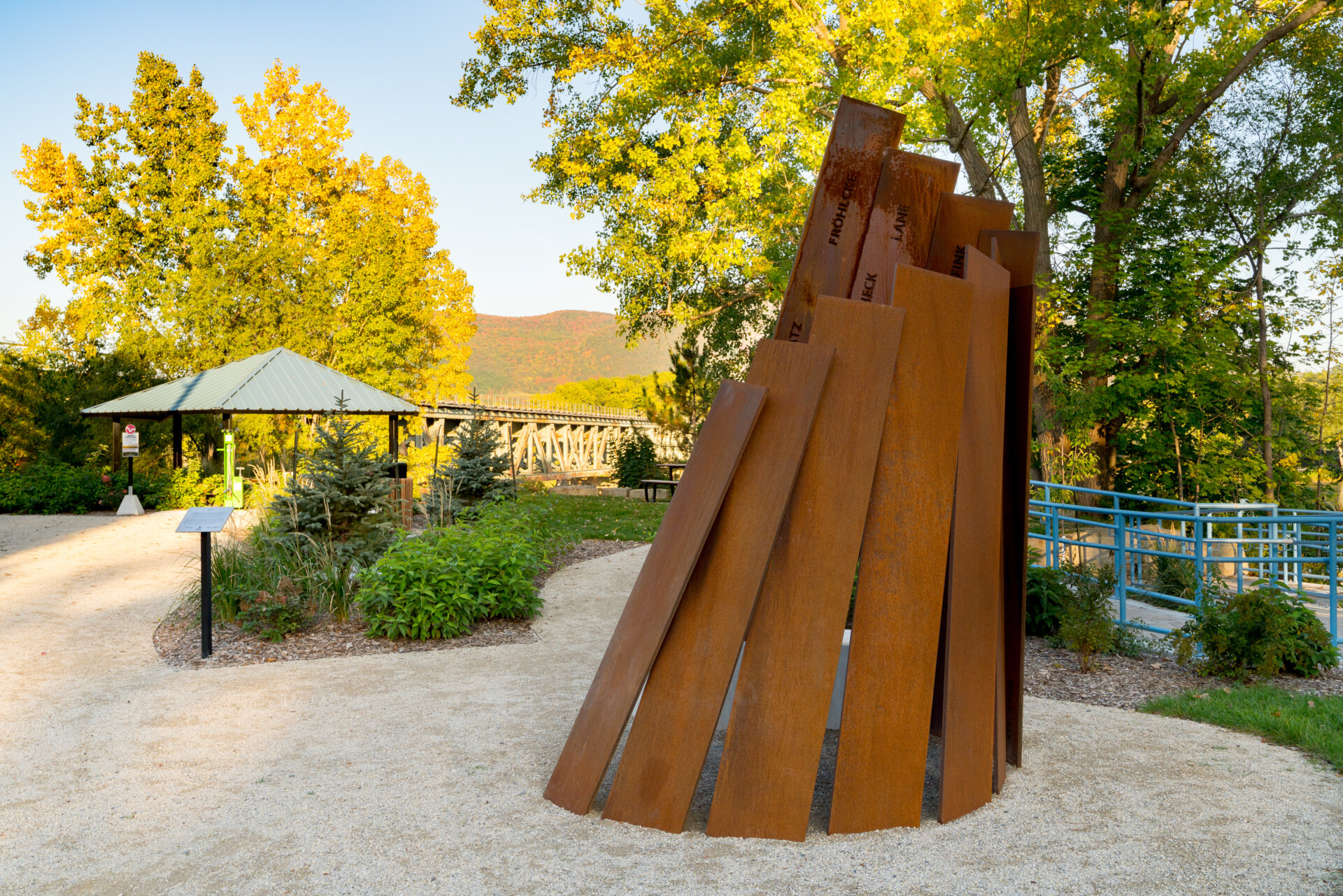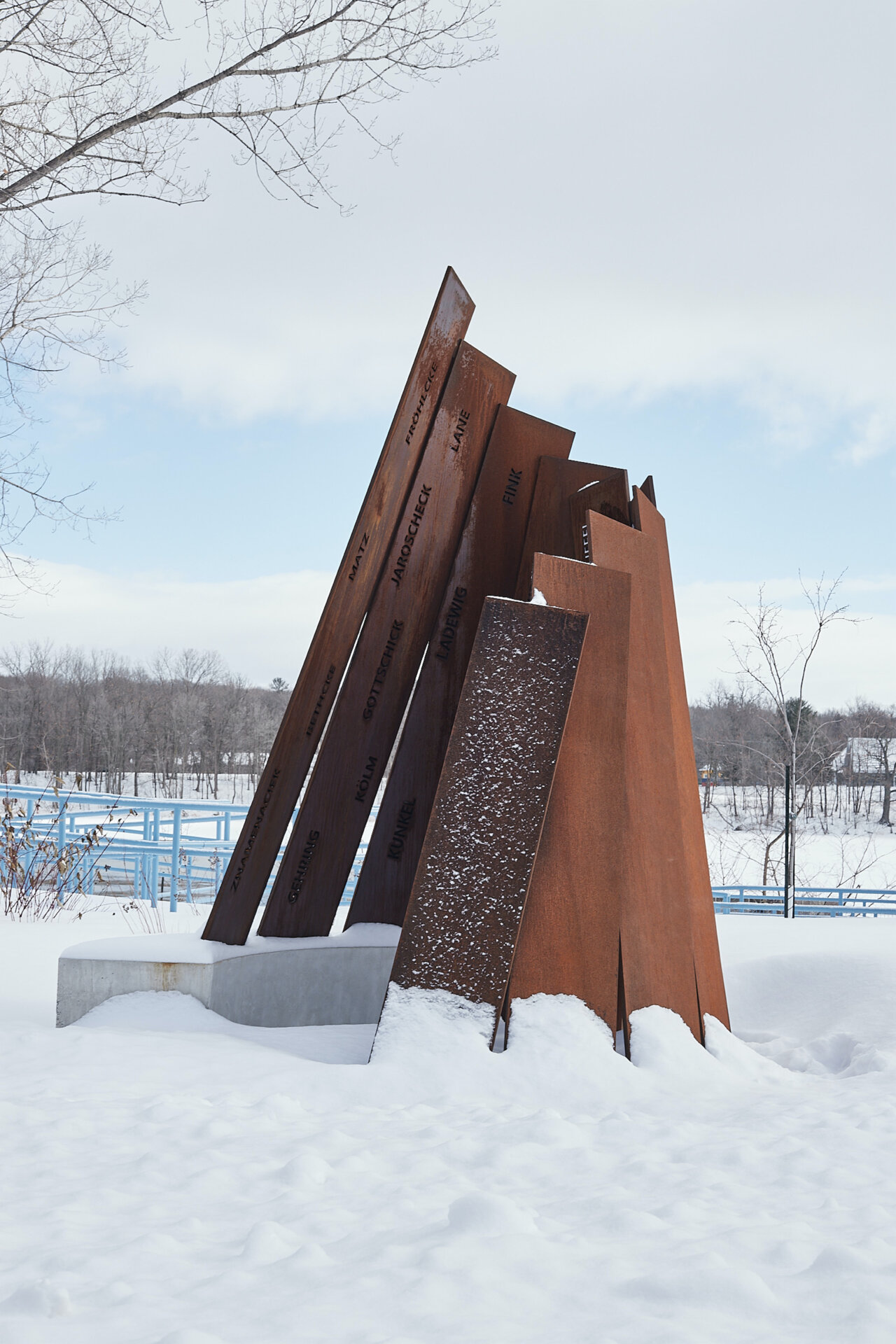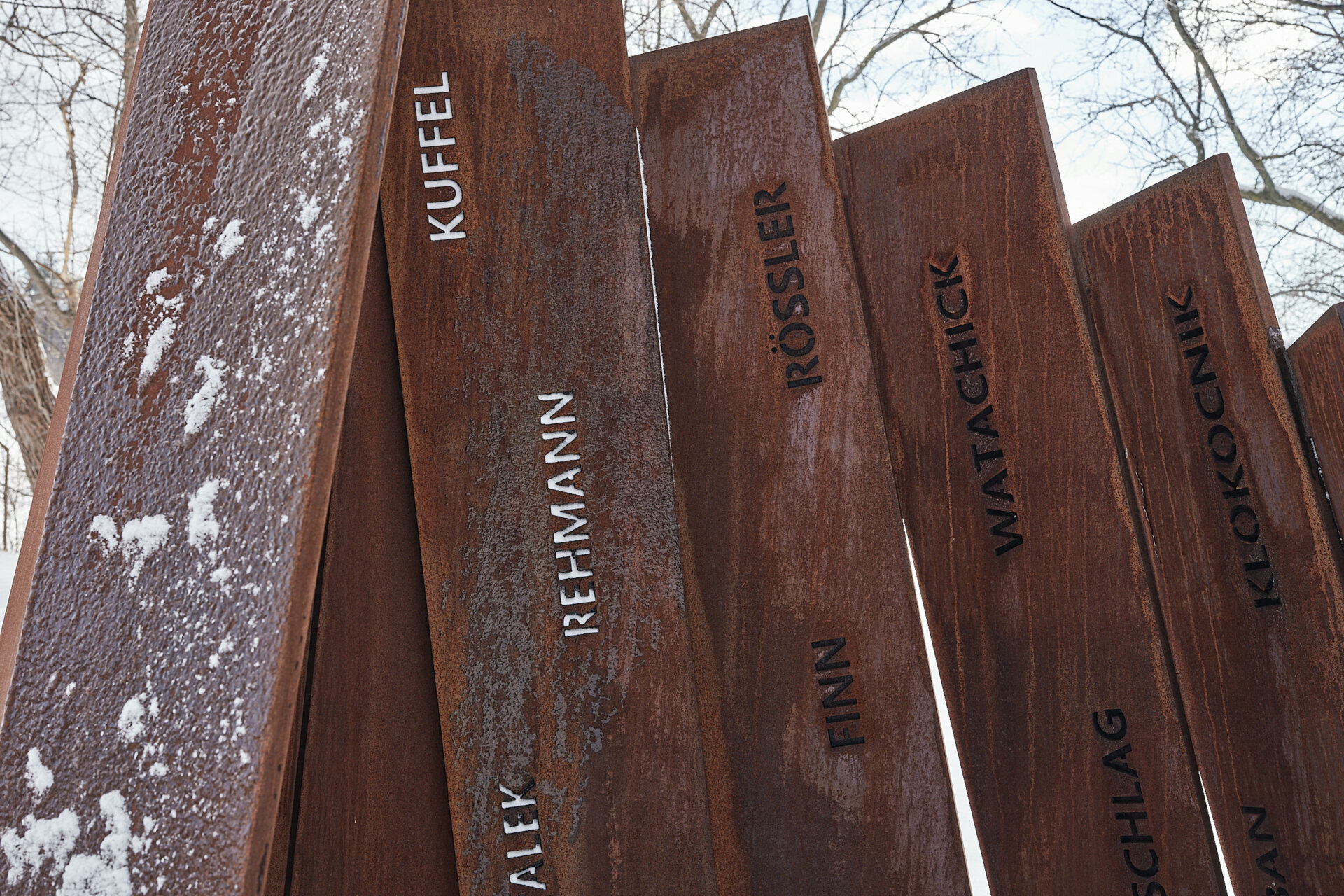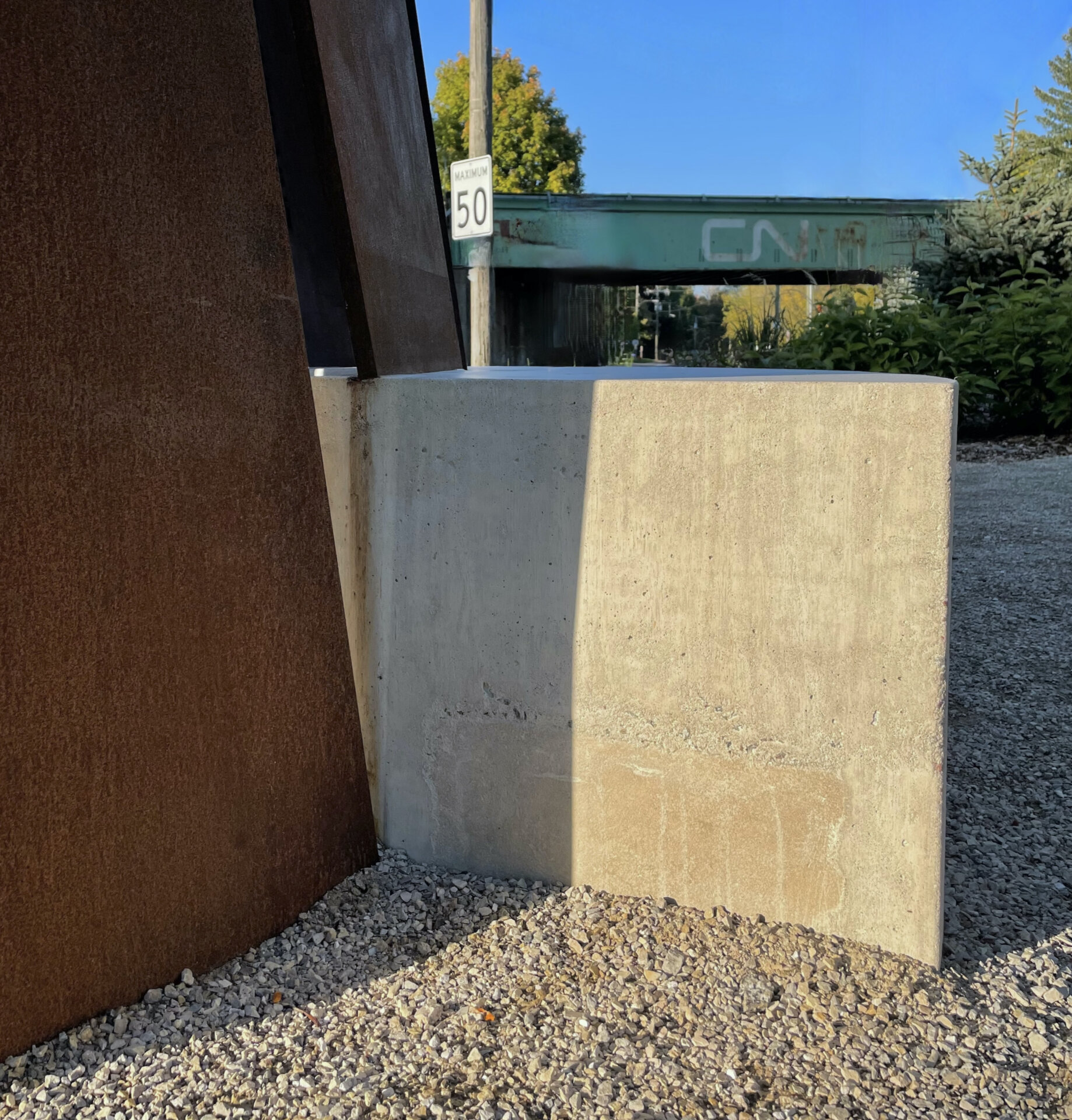
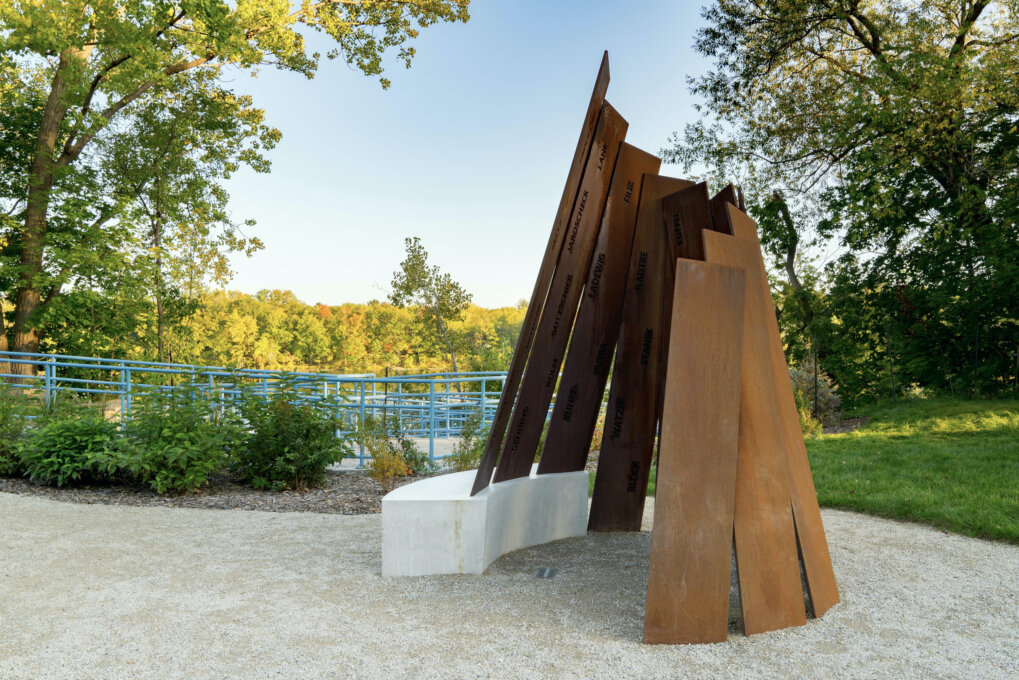
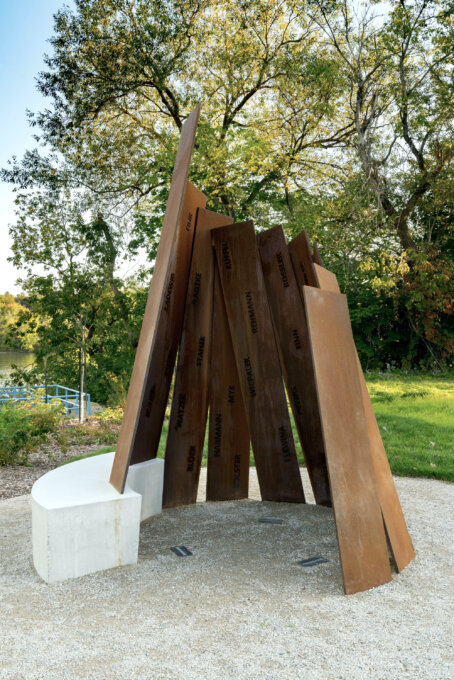
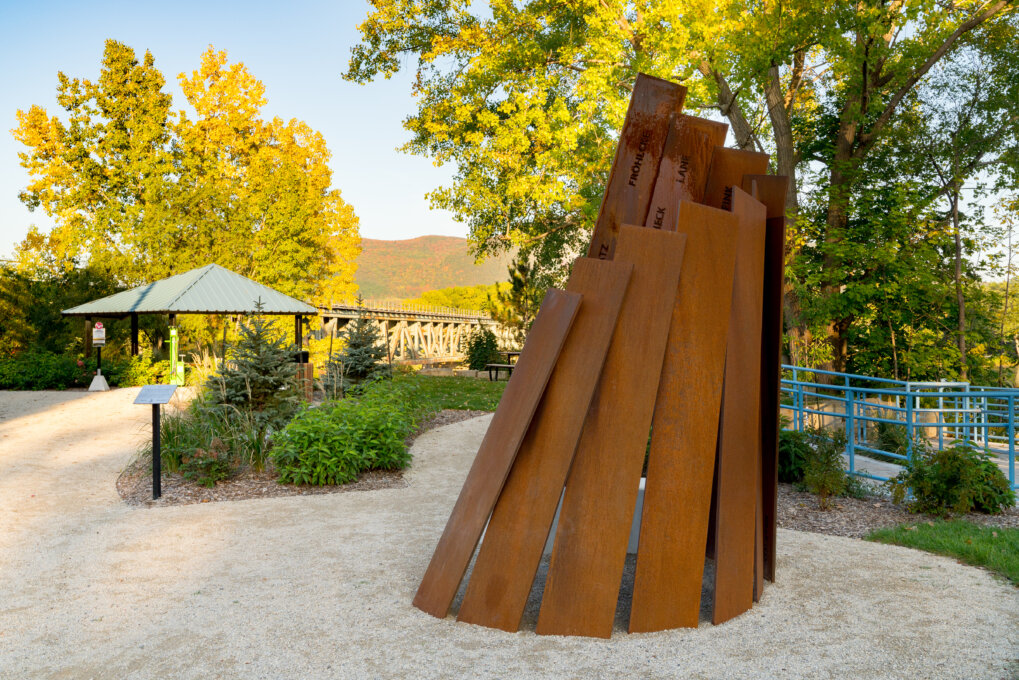
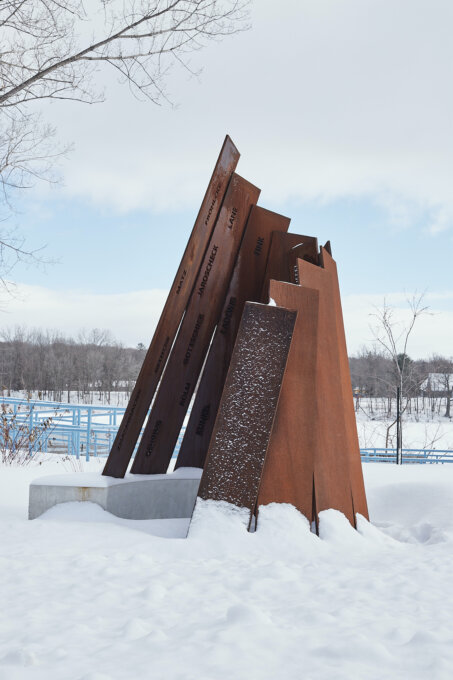

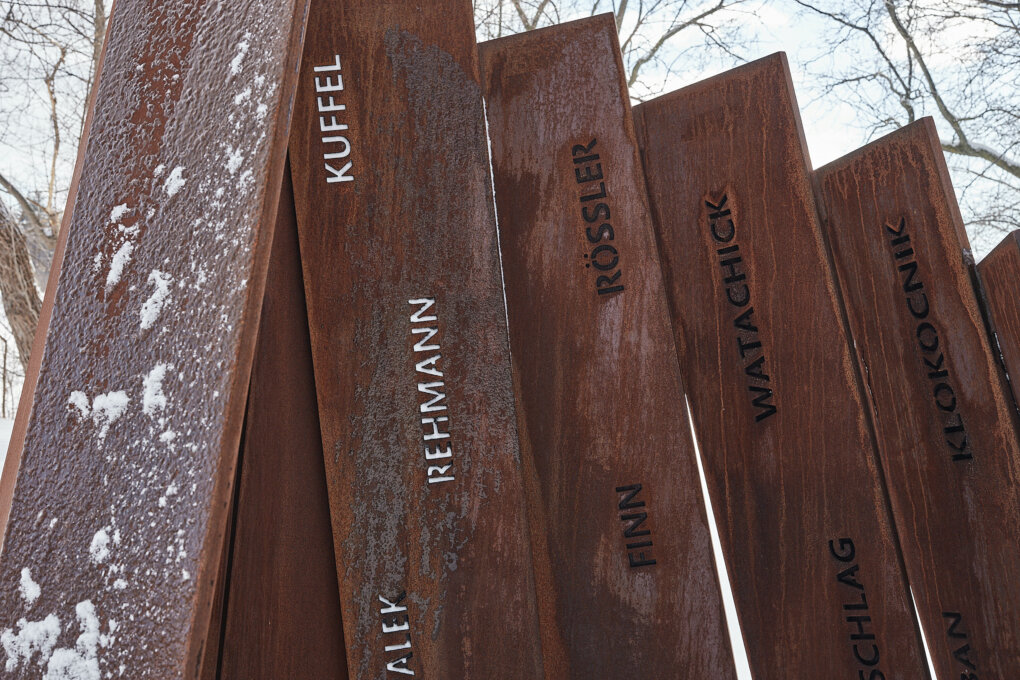
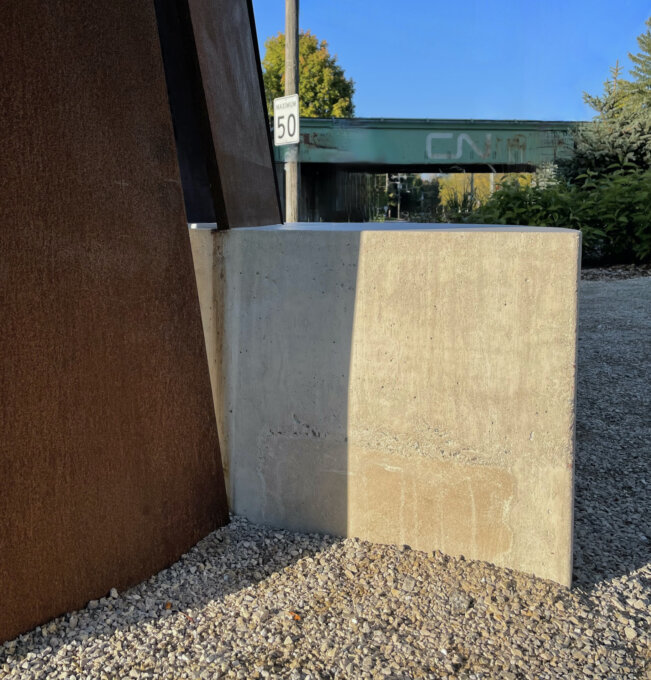
Share to
Point pivot
By : Julie Robert
GRANDS PRIX DU DESIGN – 15th edition
Discipline : Art & Photography
Categories : Art Projects / Urban Art : Gold Certification
Categories : Art Projects / Visual art
Categories : Art Projects / Artwork - Public Space : Gold Certification
Point pivot is a participatory sculptural installation composed of Corten steel, white concrete, limestone and 3 recessed solar lights. This public art work honours the memory of the 99 victims of Canada's most important railway tragedy to this day, when special train number 168 crashed into the Richelieu River after the pivot bridge had been opened to let a convoy of barges from the tug Champlain pass on June 29, 1864. The 11-car convoy was carrying 459 immigrants, mainly of German cultural origins who wished to settle in the Canadian and American West.
The structure is made up of two Corten steel arches and a white concrete bench. Each of the six plates that make up the inner arc (right) bows to the right on the adjoining plates. As for the outer arch (left), the five plates lean to the left and rest on the adjacent pieces, creating, opposite the intersection of the two arches, an opening that invites users to its centre. At the heart of the work, the names of the 44 families who lost at least one loved one during the tragic event are carved into the metal. The recessed lights offer a solemn night lighting.
The steel plates representing in number the wagons that made up the special train N ̊168 are both the punctuated representation of the sleepers, a fundamental element of the construction of the railway and of the impact between the wagons during the accident. Each of the plates that rests on the other echoes the mutual aid and solidarity shown by the citizens of Beloeil and Montreal at the time of the tragedy to help the survivors. The two arches that meet one another to become one, reflects the unification of the immigrant reality with the new land of welcome. The roundness of the arches and the seat evoke the movement of the pivot of the bridge and the migratory currents over the years. The use of steel enters into a dialogue with the railway bridge in the centre of the plot. The positioning of the bench facing the mountain offers a perspective on the railway line and guides, through the linearity of its features, the thoughts of the users towards the origin of these families who came from abroad. The semicircular shape that rises to the sky suggests the traditional shape of the tipi as a home and as a community gathering space. As for the oxidation of the slats, they unite material with time and suggest the presence of fire through the flame as a symbol to different forms of spirituality, as a sacred element, as an allegory to eternity and light.
The immediate peripheral ground covering of the stabilized stone extends inside and around the perimeter of the space granted for the work, accentuating the complete integration of the project into its environment, like the newcomers to the continent. Around the edge, a massive plantation of Hordeum jubatum, envelops the work with the movement of its silky windswept spikes. This native plant, appearing spontaneously along the railway tracks, amplifies the sensory experience of the participants, like a transient soundtrack.
The citizens of Beloeil and several Montreal stakeholders were of great help and essential support during the tragic event by providing care and offering food and lodging to the survivors 2. As a symbol and to highlight their contribution, I integrated in a personal capacity, a white limestone block which was poured into the concrete bench. This stone comes from the soil of our Beloeil property. It offers support to those who rest there.
Collaboration
Other : La Société d'histoire et de généalogie de Beloeil-Mont-Saint-Hilaire




